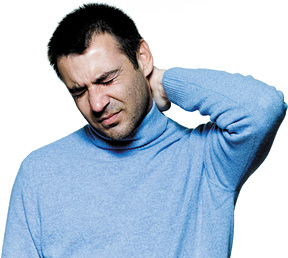Physical Therapy: Physical therapy is an effective treatment option for whiplash, especially when combined with other treatments, such as bracing.
Physical therapy techniques can help restore proper function and movement of damaged tissues. Physical therapy includes both passive and active treatments. Passive treatments help relax you and your body. They're called passive because you don't have to actively participate. You'll probably start with passive treatments as your body heals and/or adjusts to the pain. But the goal of physical therapy is to get into active treatments. These are therapeutic exercises that strengthen your body so that your spine has better support.
Laser Therapy: Laser therapy is a safe, non-invasive and very effective treatment for speeding the healing process of damaged tissue, reducing pain, muscle spasms and inflammation from whiplash injuries of the neck and back. Laser therapy is a bio-stimulator that helps the body heal itself, sending healing photon (light) energy to injured tissue, which in turn creates a series of chemical reactions that accelerate the body's natural healing mechanisms. Properly administered laser treatments help decrease pain and inflammation, help generate new and healthy cells, improve nerve function, increase the speed, quality and tensile strength of tissue repair, and improve blood circulation to the tissues, all for the treatment of pain.
When it comes to whiplash, be proactive in your prevention strategy and treatment options. Educate yourself about the options available to you and work closely with your health care professional to ensure maximum benefits from therapy. Knowing your options is the foundational key to reaching your goal of getting back to health. Whiplash can be a difficult condition to recover from; however, with your chiropractor in your corner and an array of conservative treatment options at their disposal, you're in the best of hands.
Recovering From Whiplash: Key Action Steps
If you or someone you know is suffering from whiplash, here are some action steps to take:
- Schedule an appointment with your chiropractor, who can evaluate the severity of your condition and get you on the road to recovery immediately. Your chiropractor will likely recommend some or all of the following:
- For at least 2-3 weeks, avoid activities that bring on or worsen your pain and stiffness.
- Don't lift or carry anything heavy or participate in sports.
- Do not sit for long periods of time.
- Use an orthopedic head support pillow while sleeping.
- If possible, stay active by taking short walks.
- If you have pain when you move your head or the pain involves your shoulders or arms, your doctor may recommend a soft neck collar or a natural pain reliever.
 While recovering and under care, contact your chiropractor if any of the following occurs:
While recovering and under care, contact your chiropractor if any of the following occurs:
- Neck pain and stiffness return after they initially went away.
- Neck pain is so severe that it interferes with your daily activities.
- The pain spreads to your shoulders or arms.
- You have numbness, tingling, or weakness in your arms or legs.
- You have problems with your bladder or bowels.
- Headaches become severe and do not resolve.

